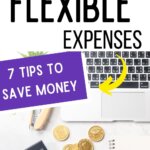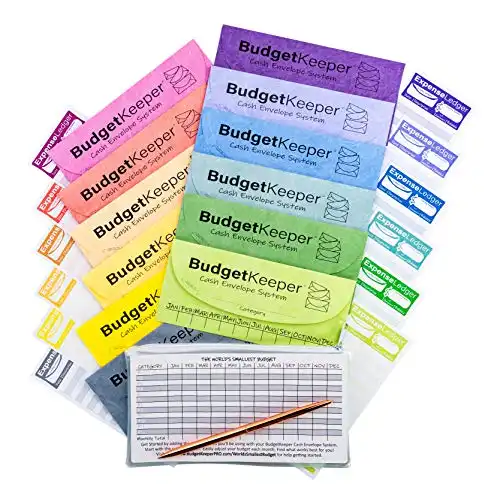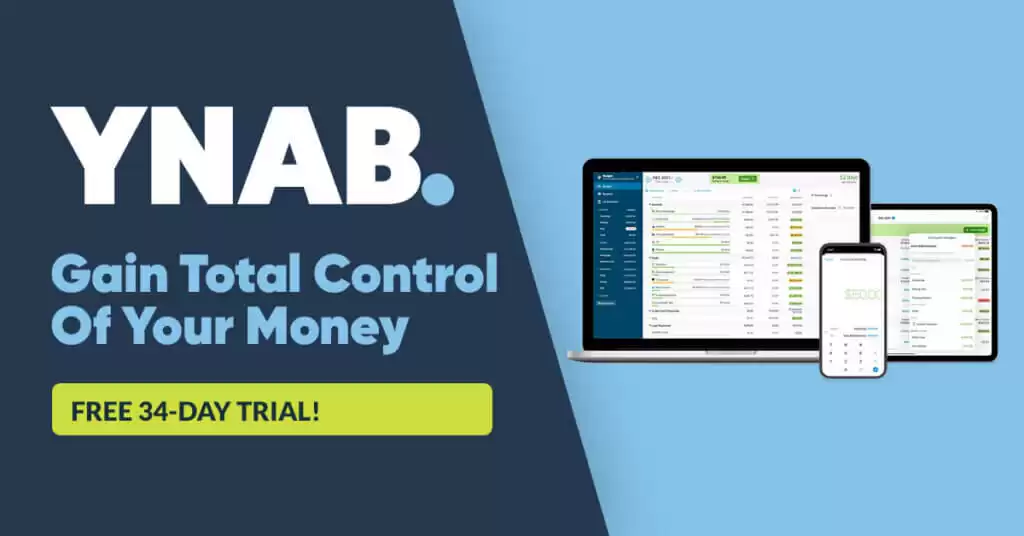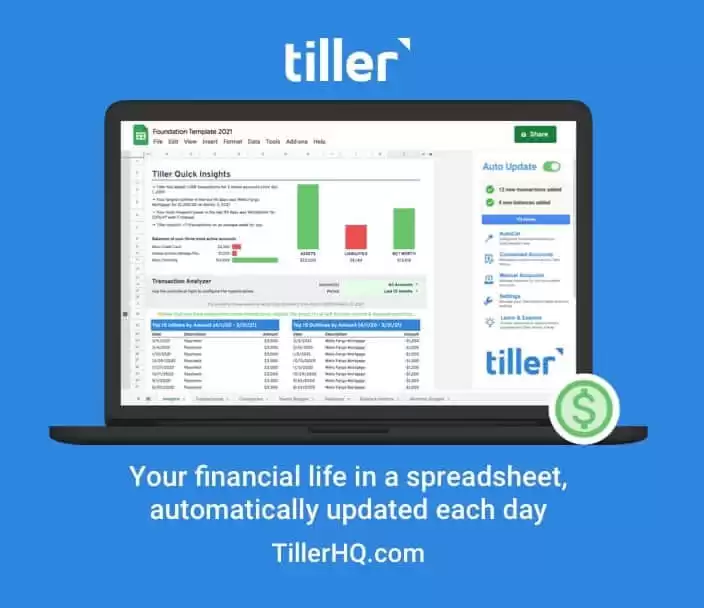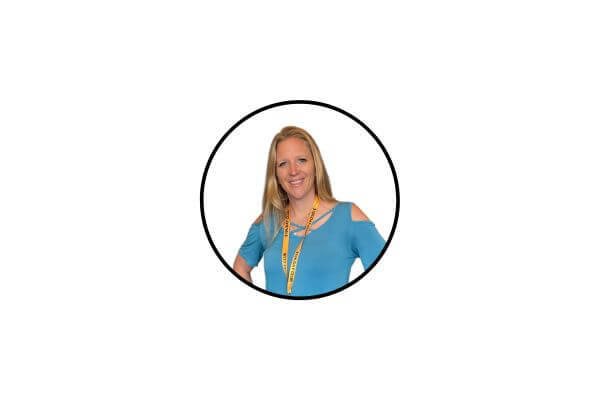How to Budget Flexible Expenses and Save Money?
Inside: Do you find it difficult to stick to a budget, despite trying your best? If so, you’re not alone. Budgeting can be a tricky task, but by understanding flexible vs variable expenses, you will better manage your money.
Creating a budget is a fundamental step in shaping your financial well-being, and understanding how your expenses fit within this budget is essential.
These are expenses that can be easily modified or eliminated when monetary constraints arise, thus playing a significant role in stabilizing your financial health.

This post may contain affiliate links, which helps us to continue providing relevant content and we receive a small commission at no cost to you. As an Amazon Associate, I earn from qualifying purchases. Please read the full disclosure here.
What is a flexible expense?
A flexible expense is a budget item you can adjust or modify as per your financial situation. This wiggle room inherent in such costs is not vital for survival, unlike the rigidity of fixed costs such as rent or health insurance.
Typically, flexible expenses mirror variable expenses.
You can manage these flexible expenses depending on your financial goals or constraints, making them an important part of budget planning.
| Fixed Expenses | Variable Expenses | Flexible Expenses |
|---|---|---|
| A fixed expense is a cost that remains constant and is paid at regular intervals, such as mortgage payments, car insurance, or cell phone bills, making it predictable and crucial for budgeting purposes. | A variable expense is a cost that changes over time, fluctuating based on individual decisions and circumstances, encompassing both essential spending like groceries and discretionary purchases like movie tickets. | A flexible expense is a non-essential cost in your budget that you can adjust, reduce, or eliminate to save money, encompassing diverse categories like vacation spending, beauty treatments, electronics, dining out, and entertainment services. |
What is an example of a flexible expense?

There are countless opportunities for flexible spending, some of which we might not even realize. Common examples include:
- Vacations: A sunny beach holiday might be highly appealing, but not always financially feasible. There are alternative, less expensive options such as a staycation.
- Beauty treatments: Items like haircuts, manicures, and massages fall into this category.
- Electronics: The urge to upgrade to the latest smartphone or tablet model is understandable, but if your current device works fine, that’s an expense you can postpone.
- Food and dining: While we all need to eat, the amount spent on eating out, or grabbing a latte on the go can be adjusted.
- Entertainment: Expenses here include streaming services, cable television, concerts, or movie outings. There are plenty of free things to do that don’t cost money.
Remember, the trick lies in distinguishing between what you need and what you want.
Distinguishing fixed expenses from flexible expenses
The main difference between fixed and flexible expenses lies in their ability to change.
Fixed expenses, like your rent, or more specific elements such as a lease payment, represent costs that you’re obligated to cover regularly. They’re usually consistent in amount and include items such as utilities, phone bills, insurance premiums, and car payments. Handling these sensibly is crucial as postponing or canceling these could lead to severe consequences.
On the flip side, flexible expenses vary and can be adjusted or cut out entirely depending on your financial situation. These can range from dining out and entertainment costs to clothing purchases and vacation expenses. By taking control of your flexible expenses, you can ensure financial stability, even when incomes fluctuate.
Flexible Expense List Questions to Ask
- Are you incurring this expense out of necessity or is it more of a luxury or desire?
- Do I have control over the total amount spent on this expense or is it a constant obligatory payment?
- Can this expense be eliminated or reduced without drastically affecting your lifestyle or basic needs?
- Does this expense vary from month to month or can it be controlled based on your financial situation?
- If you were to face financial constraints, could this expense be readily cut back or postponed?
If you answered yes to these questions, then you have a flexible expense.
To further guide your financial decisions, sign up for our informative newsletter.
Which budgeting method works best for flexible expenses?

Choosing the best budgeting method varies greatly depending on your financial habits, goals, and discipline.
Regardless of the budgeting method you choose, remember that flexible expenses are the last thing that you prioritize in your budget.
Option #1 – Envelope System
The “Cash Envelope System” works well for many, where you allocate a specific amount of money for each flexible expense category in separate envelopes. You only spend what’s set aside in each envelope, assisting in keeping variable and flexible costs in check.
The envelope system allows you to save in advance for flexible expenses you want like a vacation or new car or even new clothing.
Find 12 assorted color envelopes to provide you the ability to easily identify the categories in your purse or wallet.
Perfect to use with the cash envelope system.
Option #2 – Pay Yourself First
Alternatively, the “Pay Yourself First” budget prioritizes savings. Something we like to do around here at Money Bliss.
Right after receiving your paycheck, you immediately transfer a designated amount into your savings or investments. The remaining money is then divided among your fixed, variable, and flexible costs.
Hailed for its competitive APY rates and digital ease of use, GOBankingRates named CIT as one of the Best Online Banks for 2022.
Earn one of the nation's top rates.
Option #3 – Zero Based Budget
Lastly, the “Zero-Based Budget” is a method where every dollar you earn is allocated to a particular expense category, leaving you with a zero balance at the end of the month.
This 3 layer system starts with your fixed expenses, then moves to variable expenses. If you have money left over, then you can work on including those fun money flexible items or a deposit into savings account.
In essence, the best budgeting technique is one that fits your needs and aids in achieving your financial goals.
Enjoy guilt-free spending and effortless saving with a friendly, flexible method for managing your finances.
- Comprehensive approach to budgeting, helping you plan monthly budgets based on your income.
- Offers expert advice, making it suitable for those who require an in-depth, forward-thinking budgeting strategy.
- Superior synchronization skills make it the winner in this area.
- YNAB has extra features like goal setting for budgeting, shared budgeting tools for partners.
- Option to manually add and upload transactions from accounts each month.
- YNAB prioritizes user privacy.
How do you budget for flexible expenses?

Budgeting flexible expenses may seem daunting initially, but with a systematic approach, it becomes manageable.
Here are the steps to follow:
- Calculate Your Income: Identify your total monthly income after taxes, this is your starting point.
- Identify Your Monthly Expenses: Take your bank and credit card statements; evaluate your spending habits to identify your expenses. Start with your fixed expenses as those are priority. Then move to variable and flexible expenses as your budget allows.
- Set a Budget: Employ the 50/30/20 rule (or any other method that works best for you) to divide your income between essentials, flexible expenses, and savings.
- Track Spending: Regularly monitor your spending against the budget set.
- Adjust and Control: After monitoring, make necessary adjustments to control your expenditures.
- Consistency: Continually follow these steps for a few months, change gets easier over time, and so will managing flexible costs.
Budgeting, especially flexible budgeting, allows for financial adaptability, enabling companies to seize unexpected opportunities or navigate emergencies without severe monetary strain.
Learn how many months it takes for your budget to start working.
How tracking your spending can help
Learning to recognize your overspending by diligently tracking can offer an enlightening picture of your financial habits. It aids in understanding where your money is being utilized and exposes any neglected ‘financial leaks’. A no spend challenge can help you pinpoint these issues.
Planning and then tracking your spending is crucial in forming an effective budgeting strategy. This is where a calendar can come in handy.
Tracking can be achieved manually via saving receipts, noting down amounts, or through digital means such as online budgeting tools or apps like YNAB or Tiller Money. With regular tracking, you can regulate your spending. Thus, ensuring you stick to your set budget, and make informed future financial decisions.
Your financial life in a spreadsheet, automatically updated each day.
Tiller is the fastest, easiest way to manage your money with the unlimited flexibility of a spreadsheet.
Update your finances in one place, so you can take control of spending, optimize cash flow, and confidently plan your financial future.
- Tiller automatically updates Google Sheets and Microsoft Excel with your latest spending, balances, and transactions each day.
- No more tedious data entry, CSV files, or logging into multiple accounts.
- You can customize everything and finally track your money, your way.
Tips and tricks for handling flexible expenses in your budget

Optimizing your budget while dealing with flexible expenses need not be a daunting task. Here are some tips to help:
- Prioritize Savings: Always try to prioritize savings. One of our money saving challenges can help you.
- Use Sinking Funds: This is money set aside to be used at a future time for a specific purchase.
- Control Impulsive Spending: Limit frequent shopping trips, reduce eating out, and avoid buying unnecessary gadgets.
- Substitute Luxuries with Alternatives: Option for budget-friendly alternatives like watching movies at home instead of the cinema, or cooking at home instead of dining out.
- Utilize Budgeting Tools: Make use of budgeting apps or financial management tools that can track spending and help maintain your flexible expenses.
- Practice Mindful Spending: Stay aware of your financial goals and make purchasing decisions that align with those goals.
- Utilize Discounts: Seek opportunities for discounts that can contribute to these savings. For instance, some car insurance companies provide a discount for annual payments rather than monthly.
Remember, the goal isn’t to eliminate flexible spending entirely. But to strike a healthy balance that aligns with your long-term financial health.
Personal finance and money management software allows you to manage spending, create monthly budgets, track investments, retirement and more.
I have used this platform for over 20 years now.
- Birds-eye view of your complete financial picture.
- Conveniently download your spending activities, and automatically categorize them (Quicken connects to over 14,000 financial institutions).
- Track investments with it's features like portfolio analytics, retirement goals, and market comparison.
- Little complex to use at first, the learning curve is moderate.
- Yearly subscription-based model to use the platform.
FAQ
Ready to Solidify Your Budget with these Examples of Flexible Expenses

Conclusively, budgeting with flexible expenses is an essential skill for effective financial management and becoming financially stable.
The key lies in balancing your needs and wants, recognizing and eliminating unnecessary spending while prioritizing necessities. Making use of budgeting tools, like the 50/30/20 rule, can also be advantageous and strategic.
Remember, it’s crucial to be aware not only of your income but also of where your money is spent, as gaining control over your flexible expenses can help avoid financial strain and achieve your financial goals. Always strive to adapt your spending habits to best fit your financial situation.
Now, learn how to handle unplanned expenses.
Did the post resonate with you?
More importantly, did I answer the questions you have about this topic? Let me know in the comments if I can help in some other way!
Your comments are not just welcomed; they’re an integral part of our community. Let’s continue the conversation and explore how these ideas align with your journey towards Money Bliss.

